
Biography - Speakers for FluoroFest 2015
Prof. Dr. Markus Sauer - Institute of Biotechnology & Biophysics, University of Würzburg, Biozentrum, Am Hubland, D-97074 Würzburg, Germany
m.sauer@uni-wuerzburg.de
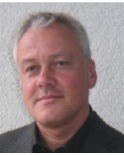 Markus Sauer is Professor Chair of Department of Biotechnology and Biophysics at the Julius-Maximilians-University Würzburg. His research interests include single-molecule fluorescence spectroscopy and imaging with a particular focus in super-resolution fluorescence imaging by direct stochastic optical reconstruction microscopy (dSTORM) and photoactivated localization microscopy (PALM). He has published more than 160 journal papers and coordinates several national super-resolution imaging projects.
Markus Sauer is Professor Chair of Department of Biotechnology and Biophysics at the Julius-Maximilians-University Würzburg. His research interests include single-molecule fluorescence spectroscopy and imaging with a particular focus in super-resolution fluorescence imaging by direct stochastic optical reconstruction microscopy (dSTORM) and photoactivated localization microscopy (PALM). He has published more than 160 journal papers and coordinates several national super-resolution imaging projects.
Title: Quantitative Super-resolution imaging by dSTORM
Prof. Alexander Demchenko - A V Palladin Institute of Biochemistry, National Academy of Sciences of Ukraine, Leontovicha street 9, Kiev-01601, Ukraine
alexdem@ukr.net
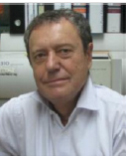 Alexander Demchenko is Professor (with Dr. Science degree) of biophysics. He is the head of laboratory of Nanobiotechnology at the Palladin Institute of Biochemistry in Kyiv, Ukraine. He is the author of four books and more than 160 journal publications that were cited more than 2000 times. His research interests are in photophysics and photochemistry of organic dyes and nanoparticles and in their application in molecular and cellular research. He is also known for fluorescence studies of proteins, biological membranes and of their phospholipid analogs.
Alexander Demchenko is Professor (with Dr. Science degree) of biophysics. He is the head of laboratory of Nanobiotechnology at the Palladin Institute of Biochemistry in Kyiv, Ukraine. He is the author of four books and more than 160 journal publications that were cited more than 2000 times. His research interests are in photophysics and photochemistry of organic dyes and nanoparticles and in their application in molecular and cellular research. He is also known for fluorescence studies of proteins, biological membranes and of their phospholipid analogs.
Title: New nanomaterials for fluorescence sensing and imaging
Prof. David Birch - Department of Physics, University of Strathclyde, Glasgow, UK
Djs.birch@strath.ac.uk
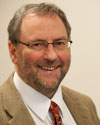 David Birch is Professor of Photophysics at the University of Strathclyde in Glasgow. He has published over 200 journal papers, mainly on fluorescence lifetime spectroscopy. His present research interests include fluorescence studies of molecular dynamics and structure down to the single molecule level, nanoparticle metrology, fibril formation and metabolic sensing. David studied physics at the University of Manchester where he obtained his Ph.D. for research on diphenylpolyene fluorescence under the supervision of the late John B Birks. After holding a temporary lectureship at Manchester he moved into industry to work on high-resolution organic mass spectrometry with VG Micromass Ltd. He subsequently moved to Strathclyde University where he was appointed Professor of Photophysics in 1993. External appointments include in 1999 the Sir C V Raman Endowment Visiting Chair at the University of Madras, in 2000 a Visiting Professorship at Kyoto Institute of Technology and, from 2002, the Visiting Chair of Applied Physics at the Czech Technical University, Prague. Previously he has held research fellowships from the Royal Society, the Nuffield Foundation and the Japanese Society for the Promotion of Science. He is a Fellow of Scotland's National Academy, the Royal Society of Edinburgh, and a member of the Permanent Steering Committee of the Methods and Applications in Fluorescence conference series. He is Editor in Chief of the Institute of Physics journal Measurement Science and Technology and joint Editor in Chief of the new Institute of Physics journal Methods and Applications in Fluorescence. He has served on the Editorial Board of SPIE's Journal of Biomedical Optics since its launch in 1995.
David Birch is Professor of Photophysics at the University of Strathclyde in Glasgow. He has published over 200 journal papers, mainly on fluorescence lifetime spectroscopy. His present research interests include fluorescence studies of molecular dynamics and structure down to the single molecule level, nanoparticle metrology, fibril formation and metabolic sensing. David studied physics at the University of Manchester where he obtained his Ph.D. for research on diphenylpolyene fluorescence under the supervision of the late John B Birks. After holding a temporary lectureship at Manchester he moved into industry to work on high-resolution organic mass spectrometry with VG Micromass Ltd. He subsequently moved to Strathclyde University where he was appointed Professor of Photophysics in 1993. External appointments include in 1999 the Sir C V Raman Endowment Visiting Chair at the University of Madras, in 2000 a Visiting Professorship at Kyoto Institute of Technology and, from 2002, the Visiting Chair of Applied Physics at the Czech Technical University, Prague. Previously he has held research fellowships from the Royal Society, the Nuffield Foundation and the Japanese Society for the Promotion of Science. He is a Fellow of Scotland's National Academy, the Royal Society of Edinburgh, and a member of the Permanent Steering Committee of the Methods and Applications in Fluorescence conference series. He is Editor in Chief of the Institute of Physics journal Measurement Science and Technology and joint Editor in Chief of the new Institute of Physics journal Methods and Applications in Fluorescence. He has served on the Editorial Board of SPIE's Journal of Biomedical Optics since its launch in 1995.
Title: Fluorescence - an enabling phenomenon for understanding the cause, diagnosis, therapy and management of disease.
Asst. Prof. Dr. Catherine Hirel - Gebze Institute of Technology, Department of Chemistry, PO.Box.141, 41400 Gebze - Kocaeli, Turkey
chirel@gyte.edu.tr
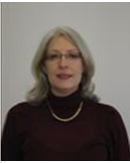 Catherine Hirel received her Ph.D. degree in Organic Chemistry from the Joseph Fourier University - Grenoble I (France), on the synthesis of enantiopure chiral nitronyl nitroxyde free radicals. After a one-year postdoctoral position funded by the European Community's Human Potential Programme (Marie Curie - project POLYCAT), she joined the group of Professor Vefa Ahsen as an Assistant Professor at the Gebze Institute of Technology (Turkey). Her research interests are focused on the synthesis of phthalocyanine and porphyrin macrocycles, the use of microwave energy as well as the fluorescence and phosphorescence properties of such compounds.
Catherine Hirel received her Ph.D. degree in Organic Chemistry from the Joseph Fourier University - Grenoble I (France), on the synthesis of enantiopure chiral nitronyl nitroxyde free radicals. After a one-year postdoctoral position funded by the European Community's Human Potential Programme (Marie Curie - project POLYCAT), she joined the group of Professor Vefa Ahsen as an Assistant Professor at the Gebze Institute of Technology (Turkey). Her research interests are focused on the synthesis of phthalocyanine and porphyrin macrocycles, the use of microwave energy as well as the fluorescence and phosphorescence properties of such compounds.
Title: Luminescent Tetraphenylporphyrin-based Oxygen Sensors
Dr. Linda Swanson - Sim4t Ltd & Department of Chemistry, University of Sheffield, UK
l.swanson@sim4t.com
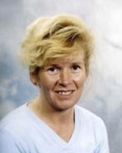 Linda Swanson is senior lecturer in Polymer Chemistry at the University of Sheffield and managing director of Simulators for Teaching Ltd. She obtained a BSc in Chemistry from Heriot-Watt University in 1985, which was followed by a Ph.D. from the same institution in 1989. In 1988 she became a senior research chemist at Royal Mail Research (Swindon). In 1991 she became a Leverhulme Fellow at Lancaster University. In 1995 she was appointed to a lectureship at Lancaster University and subsequently to a senior lectureship. In 2000 she was appointed to a senior lectureship at the University of Sheffield. Since 2011 she has also been managing director of Simulators for Teaching Ltd.
Linda Swanson is senior lecturer in Polymer Chemistry at the University of Sheffield and managing director of Simulators for Teaching Ltd. She obtained a BSc in Chemistry from Heriot-Watt University in 1985, which was followed by a Ph.D. from the same institution in 1989. In 1988 she became a senior research chemist at Royal Mail Research (Swindon). In 1991 she became a Leverhulme Fellow at Lancaster University. In 1995 she was appointed to a lectureship at Lancaster University and subsequently to a senior lectureship. In 2000 she was appointed to a senior lectureship at the University of Sheffield. Since 2011 she has also been managing director of Simulators for Teaching Ltd.
Title: Scientific instrument simulators: a virtual lab for the future
Dr. Ozlem Dilek - Istanbul Kemerburgaz University, School of Medicine, Istanbul, Turkey
ozlem.dilek@kemerburgaz.edu.tr
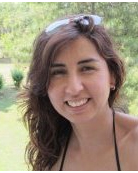 Dr. Ozlem Dilek received her B.Sc. and M.Sc. degrees in Chemistry from Middle East Technical University, Turkey. She obtained her Ph.D. in Chemistry/Chemical Biology from State University of New York at Binghamton, USA in 2009 under the direction of Prof. Susan L. Bane, where she studied synthesis and spectroscopic properties of fluorescent boron dipyrromethene derivatives for bioorthogonal site-specific labeling of proteins in live cells. In 2010, she was honored with the prestigious ACS Zappert Award and several national travel awards. Between 2009-2012, she first started her postdoctoral study at Cornell University, NY and then continued her collaborative postdoc research at UNC-Chapel Hill and SUNY, USA. Her research focused on development and applications of novel turn-off/on fluorescent chemical probes for imaging of small molecules inside living cells for dynamic visualization of biomolecules. Dr. Dilek joined the School of Medicine faculty at Istanbul Kemerburgaz University in 2013.
Dr. Ozlem Dilek received her B.Sc. and M.Sc. degrees in Chemistry from Middle East Technical University, Turkey. She obtained her Ph.D. in Chemistry/Chemical Biology from State University of New York at Binghamton, USA in 2009 under the direction of Prof. Susan L. Bane, where she studied synthesis and spectroscopic properties of fluorescent boron dipyrromethene derivatives for bioorthogonal site-specific labeling of proteins in live cells. In 2010, she was honored with the prestigious ACS Zappert Award and several national travel awards. Between 2009-2012, she first started her postdoctoral study at Cornell University, NY and then continued her collaborative postdoc research at UNC-Chapel Hill and SUNY, USA. Her research focused on development and applications of novel turn-off/on fluorescent chemical probes for imaging of small molecules inside living cells for dynamic visualization of biomolecules. Dr. Dilek joined the School of Medicine faculty at Istanbul Kemerburgaz University in 2013.
Title: Recent developments of turn off/on fluorescent probes for targeting proteins in live cells
Prof. Niko Hildebrandt - NanoBioPhotonics, Institut d'electronique Fondamentale, Université Paris-Sud, Orsay, France
niko.hildebrandt@u-psud.fr
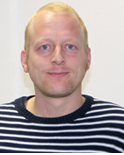 Niko Hildebrandt (www.nanofret.com) holds a diploma in Medical Physics (2001, Berlin, Germany) and a Ph.D. in Physical Chemistry (2007) from the University of Potsdam (Germany), where he also carried out postdoctoral research until 2008. From 2008 to 2010 he was groupleader at the Fraunhofer Institute for Applied Polymer Research in Potsdam. Since 2010 he is full professor at Université Paris-Sud in Orsay, France, where he is leading the group NanoBioPhotonics at the Institut d'Electronique Fondamentale with a research focus on time-resolved Förster resonance energy transfer (FRET) spectroscopy and imaging for multiplexed nanobioanalysis. Since 2014 he is a member of the Institut Universitaire de France.
Niko Hildebrandt (www.nanofret.com) holds a diploma in Medical Physics (2001, Berlin, Germany) and a Ph.D. in Physical Chemistry (2007) from the University of Potsdam (Germany), where he also carried out postdoctoral research until 2008. From 2008 to 2010 he was groupleader at the Fraunhofer Institute for Applied Polymer Research in Potsdam. Since 2010 he is full professor at Université Paris-Sud in Orsay, France, where he is leading the group NanoBioPhotonics at the Institut d'Electronique Fondamentale with a research focus on time-resolved Förster resonance energy transfer (FRET) spectroscopy and imaging for multiplexed nanobioanalysis. Since 2014 he is a member of the Institut Universitaire de France.
Title: Time-resolved FRET spectroscopy and imaging using long-lifetime terbium luminescence
Dr. Martin Wagner - DVGW - Technologiezentrum Wasser (TZW) Karlsruhe Aussenstelle Dresden, Germany
 Martin Wagner studied physical geography, hydro science and engineering and computer science at Technical University Dresden. Since 2009 he has worked at Water Technology Centre (Technologiezentrum Wasser, TZW) in Dresden in the research group of Dr. Wido Schmidt. His work focuses on spectroscopy and chemometrics and their use in the context of method development and on-line monitoring. In 2014 he received his PhD on the characterization and quantification of natural organic dissolved matter using fluorescence spectroscopy.
Martin Wagner studied physical geography, hydro science and engineering and computer science at Technical University Dresden. Since 2009 he has worked at Water Technology Centre (Technologiezentrum Wasser, TZW) in Dresden in the research group of Dr. Wido Schmidt. His work focuses on spectroscopy and chemometrics and their use in the context of method development and on-line monitoring. In 2014 he received his PhD on the characterization and quantification of natural organic dissolved matter using fluorescence spectroscopy.
Title: Characterization and quantification of dissolved organic matter (DOM) with 2D fluorescence spectroscopy
Prof. Tobias Werner - Mannheim University of Applied Sciences, Institute of Analytical Chemistry, Mannheim, Germany
t.werner@hs-mannheim.de
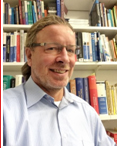 Tobias Werner is professor for General and Analytical Chemistry at the Mannheim University of Applied Sciences and the head of the Institute of Analytical Chemistry. His research interest is the development of sensor concepts and materials for applications in biomedicine, clinical chemistry and biotechnology. He is author of more than 70 publications in peer reviewed journals and holds several patents related to optical sensing principles. Prof. Werner is the translator and editor of the most widely used analytical chemistry textbook in the world, Dan Harris's Quantitative Chemical Analysis, that was published in Germany in February 2014.
Tobias Werner is professor for General and Analytical Chemistry at the Mannheim University of Applied Sciences and the head of the Institute of Analytical Chemistry. His research interest is the development of sensor concepts and materials for applications in biomedicine, clinical chemistry and biotechnology. He is author of more than 70 publications in peer reviewed journals and holds several patents related to optical sensing principles. Prof. Werner is the translator and editor of the most widely used analytical chemistry textbook in the world, Dan Harris's Quantitative Chemical Analysis, that was published in Germany in February 2014.
Title: Bioanalytical applications of steady-state and fluorescence lifetime spectroscopy: Derived multidimensional fluorescence topographs for quality assessment of edible oils and a beneficial method for signal amplification by FRET using QUAL probes measured by time-correlated single photon counting.
Prof. Michael U. Kumke - University of Potsdam, Institute of Chemistry (Physical Chemistry), Karl-Liebknecht-Str. 24-25, 14476 Potsdam, Germany
Kumke@uni-potsdam.de
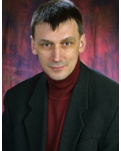 Prof. Michael Kumke (www.chem.uni-potsdam.de/pc) obtained his Ph.D. in Physical Chemistry, Optical Spectroscopy from Braunschweig University, Germany, in 1994, with a thesis on "Spectroscopic studies of the interaction between humic substances and polycyclic aromatic hydrocarbons".
Next, he became Research associate at Becton Dickinson and at Duke University, Duham, NC, USA (1990-1995), then at the German Gas and Water Association of Karlsruhe, Germany (1995-1998) and at the Engler-Bunte-Institute (water chemistry) of Karlsruhe Institut of Technology (former University of Karlsruhe), Germany.
Prof. Michael Kumke (www.chem.uni-potsdam.de/pc) obtained his Ph.D. in Physical Chemistry, Optical Spectroscopy from Braunschweig University, Germany, in 1994, with a thesis on "Spectroscopic studies of the interaction between humic substances and polycyclic aromatic hydrocarbons".
Next, he became Research associate at Becton Dickinson and at Duke University, Duham, NC, USA (1990-1995), then at the German Gas and Water Association of Karlsruhe, Germany (1995-1998) and at the Engler-Bunte-Institute (water chemistry) of Karlsruhe Institut of Technology (former University of Karlsruhe), Germany.
In 2000, he joined the University of Potsdam, Germany, where he was successively senior scientist at the Institute of Chemistry (work group of Prof. Dr. H.G. Loehmannsroeben) (2000-2006) and Private lecturer for physical chemistry, specialized in laser spectroscopy and optical sensing (2006-2011). During this period, he obtained his habilitation to the University (2005) with "Humic substances and organic model ligands and their interactions with metal ions and polycyclic aromatic hydrocarbons" post-doctoral thesis.
In 2111, he became Applied Professor for Physical chemistry in this University.
Title: Luminescence in environmental and life science applications - Looking at atoms, molecules, and nanoparticles
Prof. Claudia Wickleder - Inorganic Chemistry, Faculty for Science and Technology, University of Siegen, Germany
wickleder@chemie.uni-siegen.de
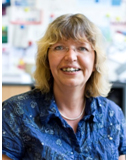 Prof. Dr. Claudia Wickleder, now has a chair of Materials Inorganic Chemistry, is Vice-Dean for Quality and International Affairs of the Faculty for Science and Technology at the University of Siegen and is working on student exchange programs with excellent international universities, is Vice-President of the Division of Inorganic Chemistry of the European Chemistry Association (EuCheMS), Consultant: ESF (European Science Foundation), DFG (German Science Foundation), AvH (Alexander von Humboldt-Stiftung), SNF (Swiss National Science Foundation), FWF (Austrian Science Foundation), ARC (Australian Research Council), DAAD (German Academic Exchange Service), strong international network and cooperations with numerous European and non-European (e.g. China, France, Israel, Azerbaijan, USA, Brazil) colleagues, member of the advisory board of numerous international conferences and summer schools.
Prof. Dr. Claudia Wickleder, now has a chair of Materials Inorganic Chemistry, is Vice-Dean for Quality and International Affairs of the Faculty for Science and Technology at the University of Siegen and is working on student exchange programs with excellent international universities, is Vice-President of the Division of Inorganic Chemistry of the European Chemistry Association (EuCheMS), Consultant: ESF (European Science Foundation), DFG (German Science Foundation), AvH (Alexander von Humboldt-Stiftung), SNF (Swiss National Science Foundation), FWF (Austrian Science Foundation), ARC (Australian Research Council), DAAD (German Academic Exchange Service), strong international network and cooperations with numerous European and non-European (e.g. China, France, Israel, Azerbaijan, USA, Brazil) colleagues, member of the advisory board of numerous international conferences and summer schools.
She got her diploma in chemistry, Ph.D. in physical chemistry (laser spectroscopy on molecular beams) at the University of Hannover, Germany in 1995, followed by a postdoc in Bern, Switzerland (laser spectroscopy of bond energies), and a habilitation in inorganic chemistry at the University at Cologne, Germany (synthesis and optical characterization of divalent lanthanides containing materials).
Currently Dr. Claudia Wickleder´s researches focus on functional materials for optical applications: materials for solid state lightening, photovoltaic materials, materials for security applications and sensoring, and nanostructural materials: luminescent nanoparticles, thin films and MOFs, oxidic nanoparticles for several application (e.g. photocatalysis, antibacterial surfaces), luminescent properties of trivalent and divalent rare earth ions, luminescence of lanthanide free materials for resources saving, luminescence of semiconductors and quantum dots, solid state and coordination chemistry: synthesis and structure determination of novel compounds.